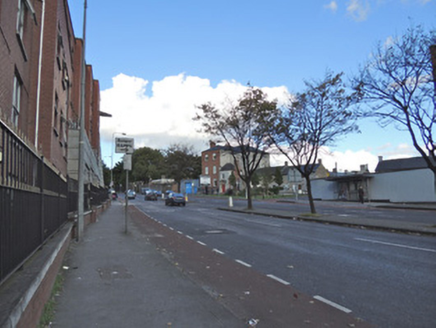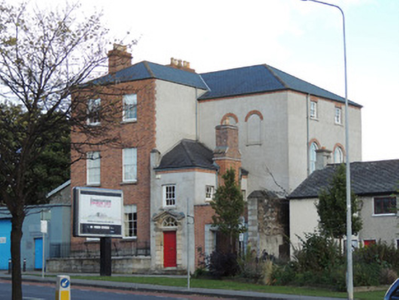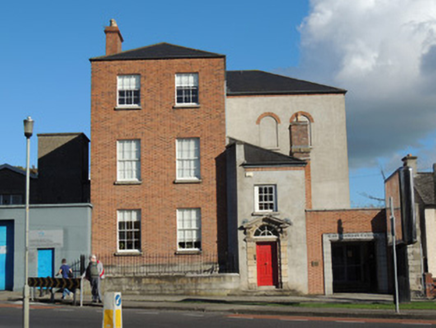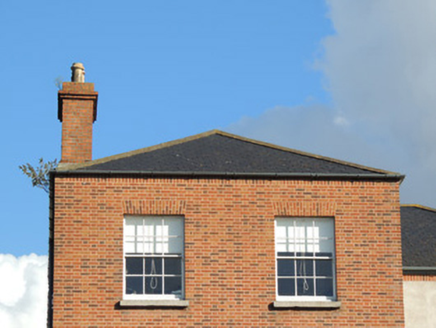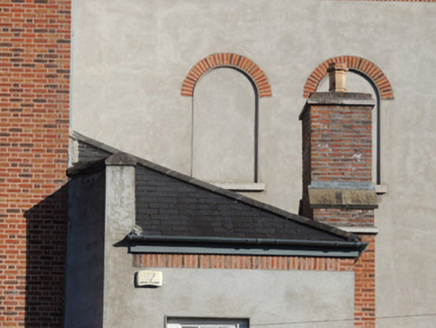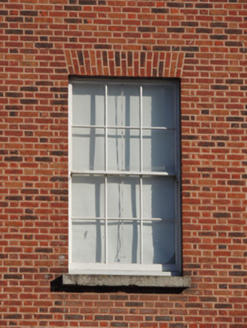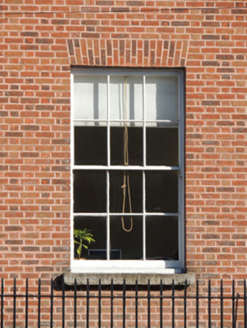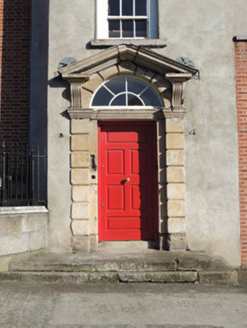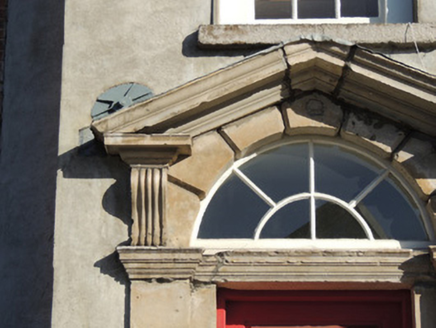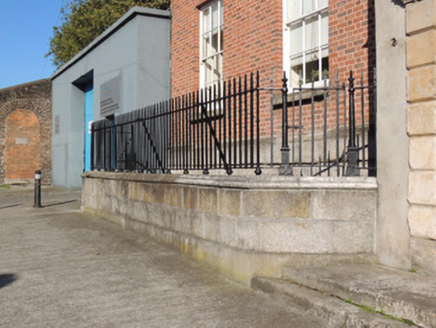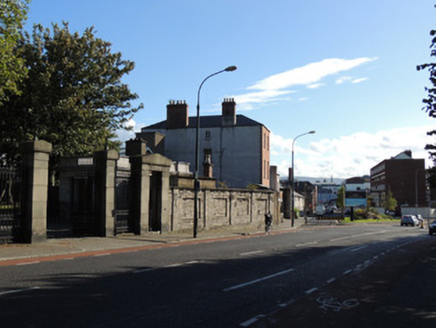Survey Data
Reg No
50070347
Rating
Regional
Categories of Special Interest
Architectural, Artistic
Original Use
House
In Use As
Office
Date
1810 - 1830
Coordinates
315040, 234858
Date Recorded
15/10/2012
Date Updated
--/--/--
Description
Detached L-plan three-storey over basement former house, built c.1820, having four-bay block to rear (east) with two-bay advanced block to north end of front elevation, with two-storey entrance porch to re-entrant corner, and single-storey flat-roofed extension to south elevation. Now in use as offices. Hipped artificial slate roof with cement coping, red brick chimneystacks to main roof and to roof of porch. Red brick walls to front elevation of advanced block, laid in Flemish bond, render to other walls. Blind round-headed window openings with red brick voussoirs. Square-headed window openings to front elevation, having brick voussoirs, rendered reveals, granite sills and six-over-six pane timber sash windows. Mixed square-headed and round-headed windows to rear and side elevations, having timber sash windows and masonry sills. Round-headed door opening having carved stone surround, having open pediment on fluted consoles and channelled engaged pilasters with lintel, spoked fanlight and timber panelled door. Rendered steps. Cast-iron railings on granite plinth wall to area to north of porch. Calp limestone boundary wall to south, door and window openings blocked by red brick.
Appraisal
Restored following dereliction, much fabric was replaced, however, the form, scale, and character of the building were retained. The form is unusual, combining a two-bay brick elevation common to street buildings with a complex plan and asymmetrical advance and recession of the facade unusual in the Georgian era. This may be the result of multi-phase building. The building was associated with the Linen Hall, located to the south, which fell into disuse in the nineteenth century and was destroyed in the 1916 rising. The boundary wall to the south is likely to have been the north wall of the Linen Hall. This building is a valuable physical and visual reminder of the eighteenth-century textile industry that gave nearby Linenhall Street and Yarnhall Street their names.
